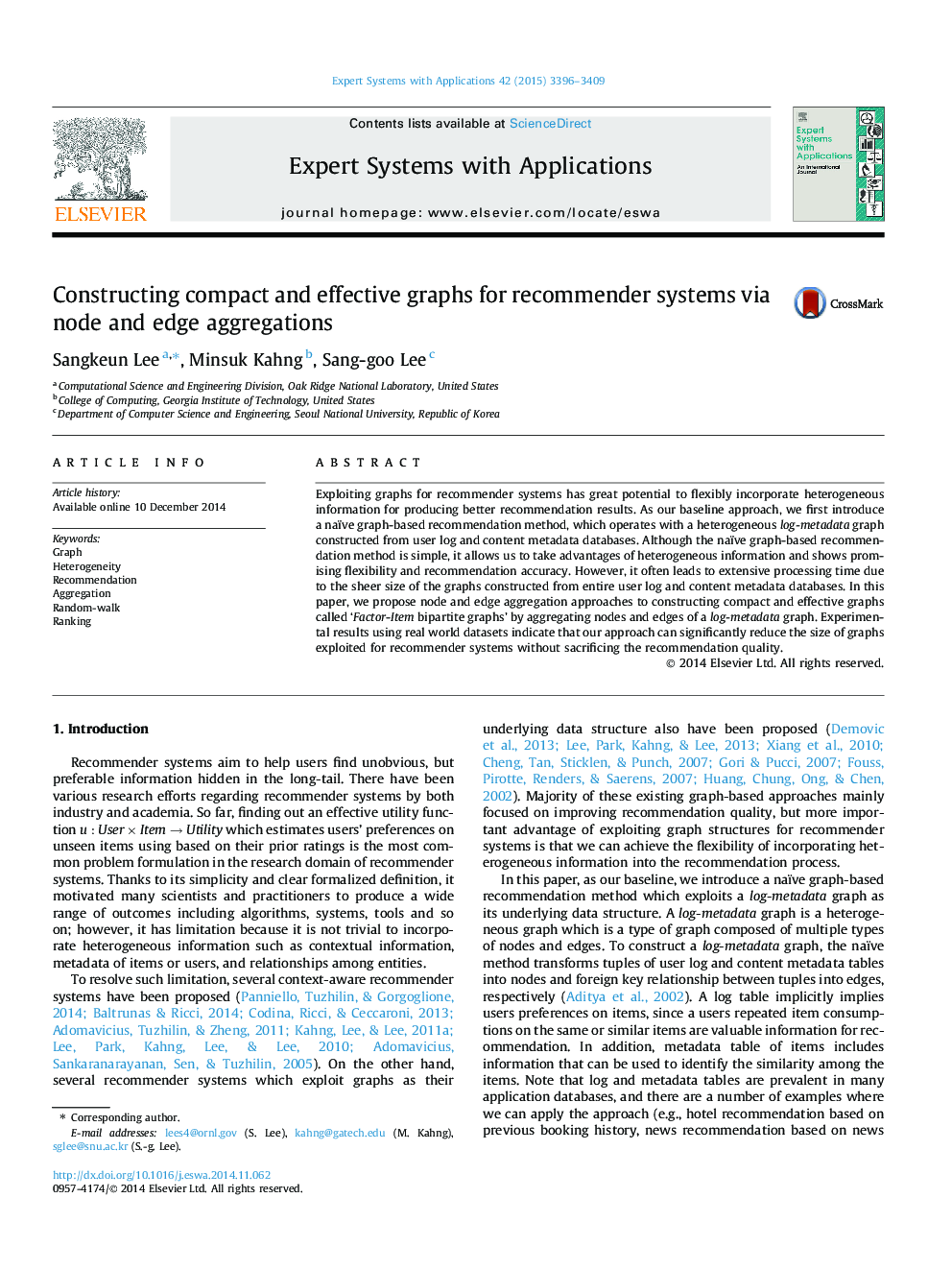| Article ID | Journal | Published Year | Pages | File Type |
|---|---|---|---|---|
| 383500 | Expert Systems with Applications | 2015 | 14 Pages |
•We present an aggregation technique for building compact graphs for recommendation.•We present an algorithm for ranking nodes for recommendation.•Node and edge aggregation can significantly reduce the graph size.•Using a compact graph for recommendation does not sacrifice much accuracy.
Exploiting graphs for recommender systems has great potential to flexibly incorporate heterogeneous information for producing better recommendation results. As our baseline approach, we first introduce a naïve graph-based recommendation method, which operates with a heterogeneous log-metadata graph constructed from user log and content metadata databases. Although the naïve graph-based recommendation method is simple, it allows us to take advantages of heterogeneous information and shows promising flexibility and recommendation accuracy. However, it often leads to extensive processing time due to the sheer size of the graphs constructed from entire user log and content metadata databases. In this paper, we propose node and edge aggregation approaches to constructing compact and effective graphs called ‘Factor-Item bipartite graphs’ by aggregating nodes and edges of a log-metadata graph. Experimental results using real world datasets indicate that our approach can significantly reduce the size of graphs exploited for recommender systems without sacrificing the recommendation quality.
